A couple of good reasons for Jason Stearns to buy a new pair of hiking boots and to pick up his field work again…….
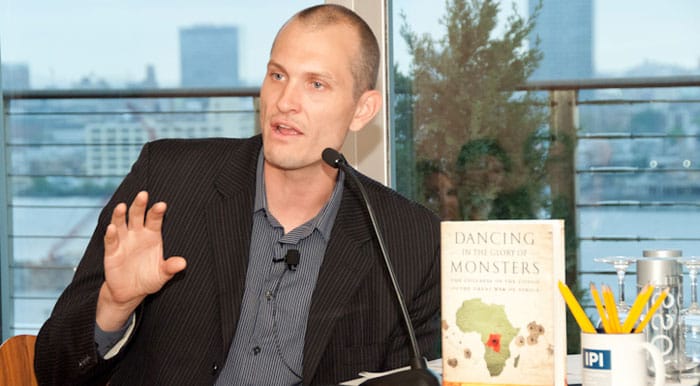
Jason K.Stearns is a scholar, a researcher and a Congo specialist and he has all the necessary credentials to prove that. As a young researcher he roamed this country in nearly all its regions and he started publishing his findings on his blog, “Congo Siasa’. In those days his analyses were fresh, and they soon became a reference to many others who were less adventurous to venture into the often very hostile and inaccessible Congolese interior. Not everybody always agreed with him, but his writings seemed honest, and they contributed to a better understanding of what was really playing in this gigantic and mineral rich African country. Two days ago, he published his last article about the country in ‘Foreign Affairs’, a well know American magazine for foreign policy topics. Journalists and researchers who manage to publish their articles in this prestigious magazine have often reached their professional summit. But while reading his text, a strange feeling of uneasiness crept in our veins: Stearns was not only sinning against the basic rules of intellectual and practical field research, but he was also taking shortcuts in the recent history of the region. He was combining old and already proven to be fake facts and clichés into new ones. By doing this, he parachuted himself back from his status of young and energetic researcher into that of a settled university professor who started to believe in his own ego and who had locked himself up in an office where spider webs are now growing on his door because he has lost touch with the reality in the field. The fact that Stearns’ writings are now often considered to have become a reference for the American State department that is often copying the info he provides only makes things worse. For our part, Stearns can write what he wants, nobody can be completely neutral and balanced when it comes to understanding Congo and to really know what is going on there. We are true believers of free speech. So, allow us to analyze his last article and to whistle him back. We’ll quote him on the most important mistakes and interpretations, and we’ll give our own opinion:
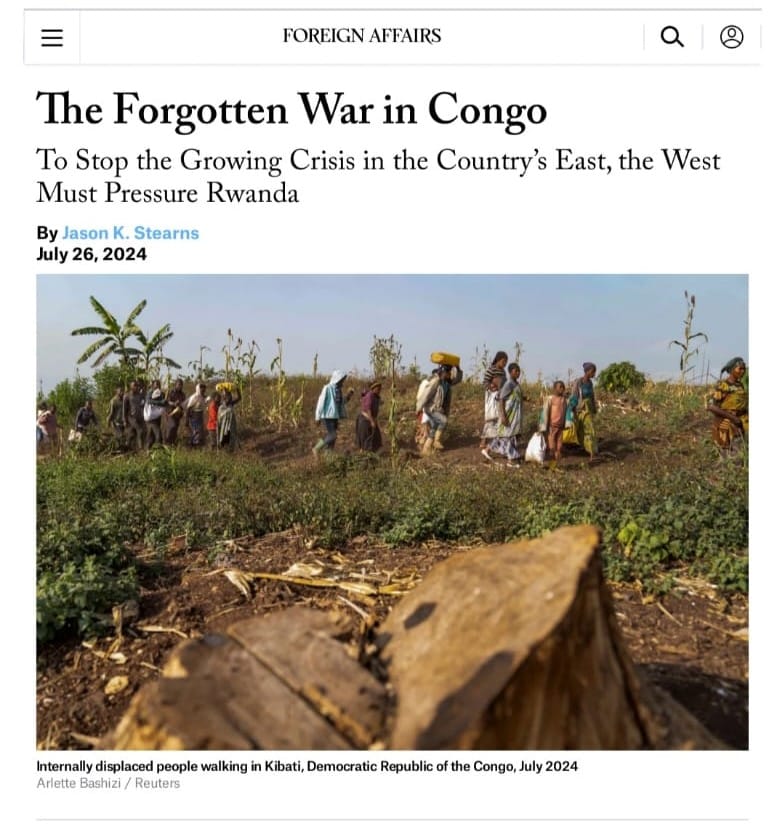
1/ The title of the article already explains a lot: “The forgotten war. To stop the growing crisis in the country’s east, the west must pressure Rwanda.”
This title is already very suggestive on itself and shows clearly that Stearns is not a neutral observer who puts the finding of others beside his own to allow the readers to get a more balanced view on the current situation in the DRC. By analyzing the quotes that will follow we’ll explain this in detail. But he is right in his assessment that the war in Congo is a forgotten one.
2/ “Few people noticed when the M23, the region biggest militia, rounded up and executed 171 people in November 2022.”
By charging his gun using this argument as his most important tool to accuse the M23 of serious human rights abuses he’s shooting himself in his foot: this event never took place and was invented by members of the Civil Society, FDLR refugees and propaganda guru Patrick Muyaya to convince the outside world that the M23 was a criminal organization that was committing war crimes at random. Muyaya launched these lies into the international media that nobody would be bold and crazy enough to go and check these facts in the field, on the spot in Kishishe. And we found out that only 19 or 20 villagers were killed in the crossfire during the fighting between the FDLR and the M23 when the FDLR was being chased out of the whole ‘Domaine area’. Muyaya even added the lie to that story that Rwandan troops also had been involved and the international press was copying this. After we published our findings and published our videos on the internet, Muyaya suddenly shut up about this incident. A couple of weeks later, when the M23 left the village, a team of Agence France Presse visited the village; they came up with two more villagers killed but their main findings correspondent largely with ours. Except for the fact that they kept on calling the event a ‘massacre’ and that they were able to film one dried out corps outside the village to ‘color up’ their story. This team was led by French photographer Alexis Hughet, a notorious Rwanda and M23 hater, who must have bitten his heels off to confirm our initial story. In the meanwhile, some members of the Civil Society and the UN had to admit as well that the initial figure of 400 killed was fiercely exaggerated and they came up with a new figure: 100 killed.
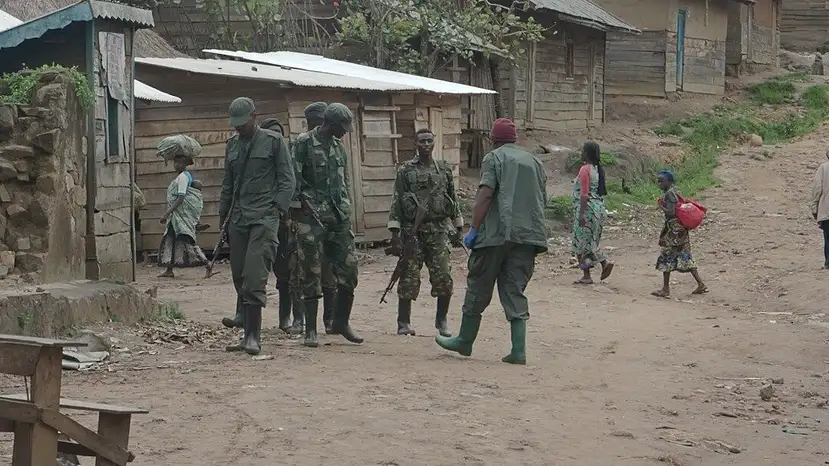
Stearns comes up in his last article with a figure of 171 ‘rounded up and executed villagers’. Neither Stearns nor the UN ever made it to Kishishe. The UN based its findings on interviews they took with refugees in camps that were under the control of the FDLR. The figure of 171 was put forward by another human rights groups who interviewed people via the phone without being able to check who they were really talking to. Their findings are highly contestable and must therefore be described as an example of typical Congolese bolox. If we would have found out that the M23 had indeed killed hundreds of innocent people in Kishishe, we would have reported this, we would not have been afraid to do this. Our professional decency and the deontology of our job are more important as the fact that we are related to the M23 and that we have sympathies for their cause. Kishishe was part of the heart land of the FDLR, Rwandan Hutu extremists, where they cultivated vegetables and fruits to sell them in Goma. The FDLR panicked when they started to lose all these lucrative businesses. As they had the local Civil Society in their hands, it was easy for them to make up fake stories such as the one about the so-called massacre in Kishishe. Our conclusion about all this is simple: Stearns does not know what he is talking about when he refers to this incident!
- For those who want to read our detailed report about our findings in Kishishe: https://gateteviews.rw/the-kishishe-report/
- For those who want to look at and to listen to the testimonies of the villagers: https://www.youtube.com/watch?v=L0DkI65f_Mk, https://www.youtube.com/watch?v=n2PJ8jrXI_w&t=22s
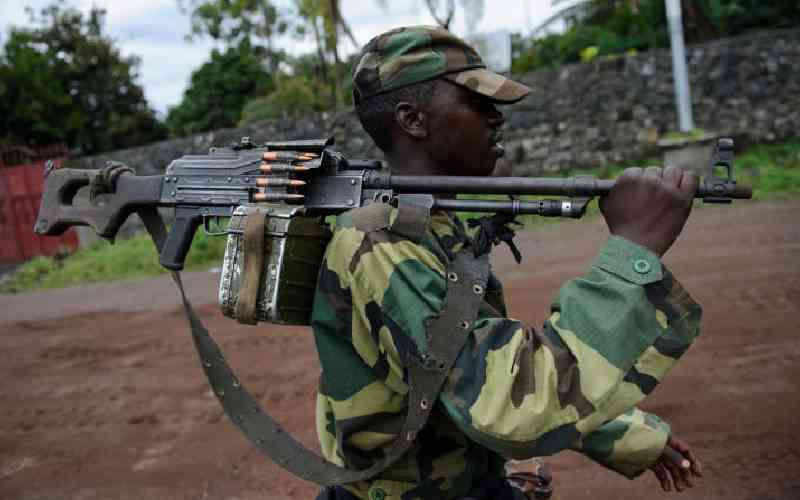
3/ “The M23 is easier to grapple with than the other militia’s. The group is largely trained by Rwanda, which sees the organization as a way to project power and gain access to Congo’s resources”:
With this shortcut Stearns’ M-16 fails him again and shoots a second bullet into his leg. He openly admits that it is easier to discredit the M23 as f.i. CODECO, the NYATURA and the ADF-Nalu as he states that the M23 is funded and trained by the Rwandan army and that the Rwandans are present in the DRC to support him. He dresses up this narrative with a couple of historical arguments without touching the root cause of the current war in the Kivus. And he’s also falling back on the ‘too easy’ argument that the Rwandans are just involved in all this for the minerals. In fact, he is also re-enforcing the attitude of the UN and most of the present NGO’s, to put more importance on the treat of a militia that receives support from outside. He’s deliberately minimizing the historical context by minimizing the relationship between what we now call Rwanda and its satellite tribes and clans in what we now call the DRC. He also puts out black on white that ‘the FDLR are a spent force, in large” and that the Rwandan government and the M23 are using this argument to whitewash their actions in Congo. This statement does not correspond with the reality in the field at all. He also fails to mention the reason why the M23 picked up its weapons again: they fled their refugee camps in Uganda and in Rwanda because the central government in Kinshasa refused to honor the agreement, they made with them after withdrawing willingly to Uganda. This agreement stipulated that negotiations would follow to allow the return of the thousands of Tutsis and the neutralization of the FDLR. The M23 was even invited to Kinshasa but their delegation waited for weeks in vain in their hotel to be received by the government. When they relocated themselves on the slopes of the Sabyinyo volcano, they became a direct treat for the FDLR who, at that time, was receiving weapons from Yoweri Museveni to destabilize Rwanda. By the time Rwanda and Uganda became good friends again, the FDLR was once again a well-oiled fighting machine that was also rearming the Congolese Hutus, the so called Nyatura.

Most of the honest Congo watchers and researchers agree that the war against the M23 was an ideal tool for Tshisekedi to distract the national and the international community from his own corruption practices. By pointing its finger at the Tutsi community in the east of the country he found an easy lightning rod that could keep him out of the picture for the misery he was causing his own population. After 2013, Rwanda had not been involved any longer in North-Kivu and during this period the number of active criminal militias had grown significantly. Most of them were guided by corrupt politicians in Kinshasa who used them to gain weight in the political spectrum of Kinshasa or to distract illegally minerals. Stearns does not mention this in his article, and he avoids also the ADF-Nalu problem as he forgets to mention that this group is also kept alive with support from Kinshasa to stir up the chaos in the region. So, for him the M23 becomes easier to grapple with because it receives help from a foreign country that also might have good reasons to defend its own security. Some UN-collaborators and diplomats told us that it is easier to influence the international community with cross border incidents and military stand offs as this inter Congolese dombolo militia phenomena can be more difficult to explain to the international audience. In this case, it can be said that the RDF is violating international laws by crossing into the DRC without invitation. But they are denying the Tutsi community in the region its right for self-defense. Stearns is hereby making the same mistake as the American government who is very one sighted while trying to tackle the problems. He is also ignoring that the Congolese Tutsi community is making its last stand in the region: they will now withdraw without being able to guarantee the peaceful return of their people from Rwanda and Uganda, the complete neutralization of the FDLR and the possibility to protect their own people themselves. He does not mention either that the local population is fed up with this war and the central government in Kinshasa. The region wants peace: the American government can come up with the argument that all the fighting factions have to return to their cages but the M23 wants to solve this problem now once and for all.
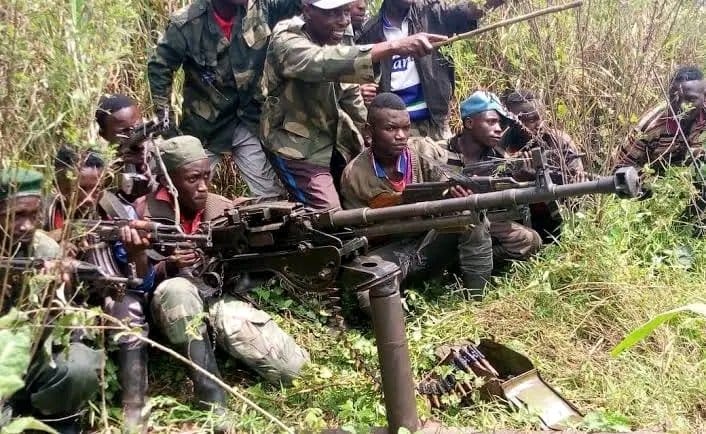
In the meanwhile, the total population of Tutsis in North-Kivu had dwindled from approx. 220.000 in 1992 to not more than 10.000 today. Thousands of them fled, others were shipped out to the US, Canada and Australia by the OIM and those who didn’t want to leave are being prosecuted now like rabbits; with hatred messages, by the FDLR who now became part of the Congolese army. And this pogrom is far from finished. Several Tutsi’s are still being killed there, every day. Stearns is justifying all this to happen by leaving these elements out of his narrative.
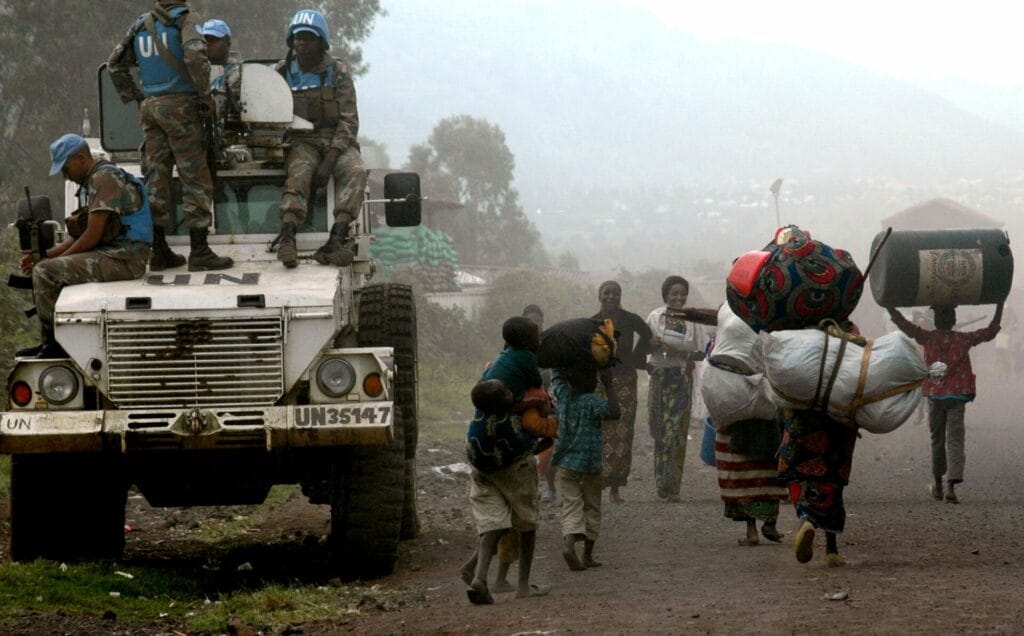
In his narrative, he puts a lot of weight on the presumption that Rwanda’s only goal to destabilize Congo is the fact that the country is a gold mine for Rwandan businesses. We are getting tired of these accusations because they are false. Before the resurrection of the M23 Rwanda was doing normal business with the DRC. Minerals were being brought to them at the border by Congolese businessmen of whom most of them were affiliated to Congolese politicians in Kinshasa. Kigali never stirred up the recent fighting in and around Goma. And it is Tshisekedi himself who is responsible for the fact that the M23 now encircles Goma and that the city might soon fall into the hands of the rebels. The guy is finished, and it is only the mea culpa from the American and the European superpowers that keeps him standing. The US and Europe are threatening the M23 and Rwanda now with sanctions, tools that are being considered here as neo-colonial ‘chicotes” or sticks to keep disobedient Africans in line. Stearns puts himself with this on the same line as his government and even becomes a reference for Washington to justify their position.
And by doing this he is also throwing the good work of some of his former close collaborators in the garbage bag. For this kind of research, he would not even have to leave his comfortable and dusty office in the US. By reading these books you get a totally different view on what is currently happening in the DRC when it comes to minerals. All these authors did their home- and footwork work well.
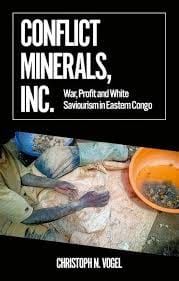
Christoph Vogel is a specialist about the current situation in the Kivus and he’s visiting the region very often. He is not relying only on contacts within the Civil Society and people such as Fred Bauma and other EBUTELI and LUCHA influencers for whom Rwanda and the M23 are bearded devils with very long tails. LUCHA even played a big role while inciting the local Congolese in the Kivus to kill and to arrest Tutsis. Vogel used to collaborate with Stearns in the past. But in his book “Conlict Minerals Inc.” he discribes in details that minerals are not the main driving factor behind this conflict and that the whole mess in the Kivus is widely misunderstood because it is only evaluated using pure western standards and norms. Without taking into consideration local African dynamics.

Eric Bruylands’ and Siddharth Kara’s books can only lead to the conclusion that the whole discussion about minerals in the African Great Lakes Region is a rather small problem compared to the much bigger and ten times more corrupt mineral deals in the west and the south of the country.
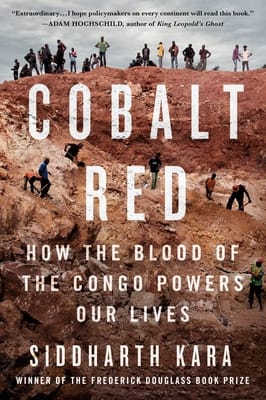
70 percent of the mineral mines in Katanga are now already in the hands of Chinese multinationals and the Americans are loosing ground very fast in the race to control the Congolese mineral market. In those pits local Congolese workers and even children are being worked to death. Rwanda and the M23 are not present in those regions and can therefore not be blamed for all this. But you don’t have to be Einstein to understand that for the US it is important to keep up the good relationship with Tshisekedi to avoid being kicked out completely of this money making mill.
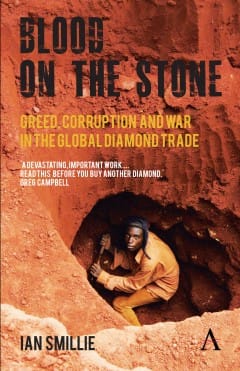
And while you’re at it, please also read the book “Blood on the Stone” about the whole swindle in Congolese diamonds. Jason Stearns might need this info to keep his future writings in balance. In fact, blaming the Rwandans for looting the Kivus might divert the attention of the outside world that much more violent, corrupt and hundred times bigger scale looting is being done by European, American and Chinese companies in other parts of the DRC.
4/ Visit Rwanda, Mozambique, CAR, possible sanctions, etc.
Jason Stearns concludes his sermon with a number of suggestions how to sanction Rwanda so that they’ll stop helping the M23. He also criticizes es the whole Visit Rwanda campaign and he even suggests that the US and Europe should put a travel ban on the country. He forgets that a similar deal was already made in 2013 in which also the Rwandans were granted some guarantees. But those were never respected. He forgets that both Rwanda and the M23 want to negotiate with Kinshasa and that every attempt to do this is blocked by the Congolese. In his eyes, Rwanda’s involvements in Central African Republic and in Mozambique are just side shows put up by Kagame to make himself popular among other African leaders.
The US and Europe sanctionned a bunch of M23 and other militia chiefs a couple of days ago in a rather symbolical way by targetting their assets in the US. To our knowledge, none of these people had assets in America. The EU did nearly the same thing. His suggestions to sanction Rwanda becomes wishful thinking and he does not understand that this would only have an adverse effect on peace in the region. To be able to look at himself again in the professional mirror, Jason Stearns should buy himself a new pair of hiking boots, mosquito spray and malaria pills, jump on a plane to the DRC and get back into the field.
Adeline Umutoni and Marc Hoogsteyns, Kivu Press Agency
